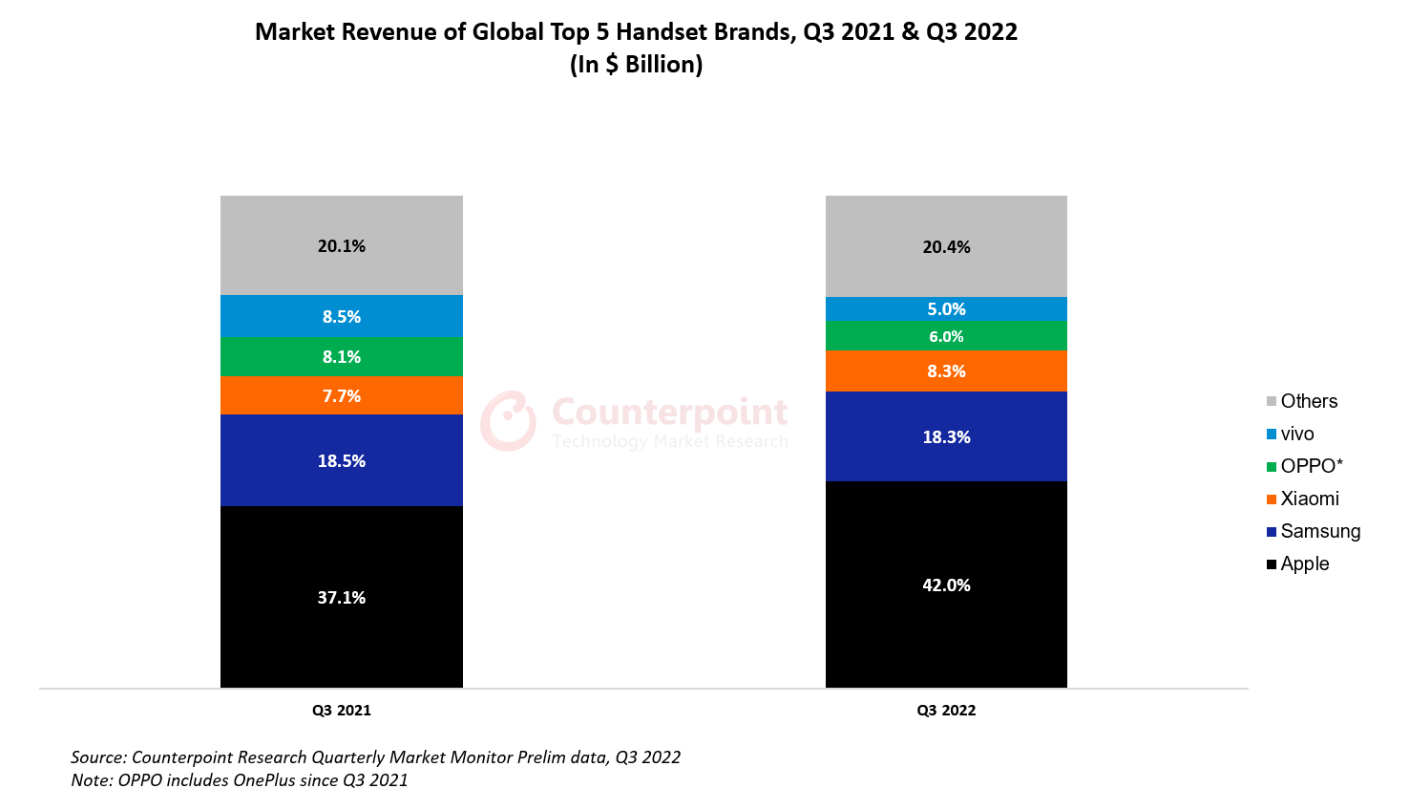- Ameya360 Component Supply Platform >
- Trade news >
- Global Handset ASP Increase Limits 3Q 2022 Revenue Decline to 3% YoY
Global Handset ASP Increase Limits 3Q 2022 Revenue Decline to 3% YoY
The record shipment contribution (46%) of 5G handsets, which cost five times an average non-5G handset, added to the global smartphone ASP and revenue growth.
The global smartphone handset market’s revenue declined by 3% year-on-year (YoY) in the third quarter (3Q 2022) to just above $100 billion, according to the latest research from Counterpoint Technology Market Research’s Market Monitor Service. A 10% YoY growth was seen in the average selling price (ASP) thanks to the premium handset segment’s greater resilience to economic uncertainty.
The record shipment contribution (46%) of 5G handsets, which cost five times an average non-5G handset, also added to the ASP and revenue growth. In terms of shipments, the overall handset market saw a 12% YoY decline during the quarter.
“At over $80 billion, the revenue contribution of 5G handsets reached an all-time high of 80% of global handset revenues, up from 69% in the third quarter of last year. In the same period, LTE handsets’ revenue contribution fell 10% to $19 billion. This shift from 4G to 5G has been led by Apple, which alone makes up for over half of all 5G revenues as over 95% of its phones are 5G-enabled. Apple saw a 10% YoY revenue growth and 7% YoY ASP growth in Q3 2022, contributing to an overall increase in global handset ASP. This is thanks in part to the launch of the iPhone 14 series as well as the Pro models, especially from the previous generation, doing well,” Senior Analyst Harmeet Singh Walia said.
Samsung, the second biggest handset OEM in terms of revenue, saw a relatively modest ASP increase of 2% YoY in Q3 2022 despite an almost doubling of the shipments of its premium Flip and Fold series in the same period as well as a 27% YoY revenue growth of its 5G smartphones. The lower growth of its ASP can be attributed to a shift in its focus from the more successful S22 series to the still upcoming foldable series. Consequently, Samsung’s revenue declined 4% YoY in Q3 2022.
Xiaomi’s handset revenue grew 4% YoY, a significant portion of which came from the low-to-mid price bands. The shipment share of the over-$300 price band declined by close to 1.5%. There was, however, a significant shift from the sub-$200 to $200-$299 price band. Consequently, Xiaomi’s ASP grew 14% YoY to $205.
OPPO, on the other hand, saw an ASP as well as a revenue decline of 5% and 27% YoY respectively. The revenue decline was primarily caused by OPPO’s shipment decline in COVID-hit China, which contributed over 40% to its total shipments in Q3 2022. Given that China contributed over half of vivo’s total shipments, its revenue took an even bigger hit of 43% YoY despite growing 4% QoQ.
Online messageinquiry
- Week of hot material
- Material in short supply seckilling
| model | brand | Quote |
|---|---|---|
| BD71847AMWV-E2 | ROHM Semiconductor | |
| RB751G-40T2R | ROHM Semiconductor | |
| MC33074DR2G | onsemi | |
| CDZVT2R20B | ROHM Semiconductor | |
| TL431ACLPR | Texas Instruments |
| model | brand | To snap up |
|---|---|---|
| TPS63050YFFR | Texas Instruments | |
| ESR03EZPJ151 | ROHM Semiconductor | |
| BP3621 | ROHM Semiconductor | |
| BU33JA2MNVX-CTL | ROHM Semiconductor | |
| IPZ40N04S5L4R8ATMA1 | Infineon Technologies | |
| STM32F429IGT6 | STMicroelectronics |
Qr code of ameya360 official account
Identify TWO-DIMENSIONAL code, you can pay attention to


Please enter the verification code in the image below:























